By 1910, about 2 million children under the age of 15 worked in industry, according to National Archives and Records Administration data.

Some states had started passing child labor laws in the 19th century. Yet other states still allowed children to toil in textile mills, factories, and mines for 60 or more hours per week. Laws also had loopholes. Some laws accepted a parent’s word about a child’s age, so many poor parents lied. Other laws only punished “knowing” violations. Employers often found ways to claim that they didn’t know the true ages of their young workers.
School attendance laws were likewise not strictly enforced. A 1907 Alabama law said children aged 12 to 16 years must attend school for at least eight weeks per year. But school certificates weren’t required.
Laws in northern states were generally more protective of children than those in the South. However, companies competed across state lines. Since child labor was cheap, companies looked for ways to remain competitive and resist or avoid stricter requirements. They might relocate businesses from northern to southern locations.
The Push for Federal Law....
The National Child Labor Committee (NCLC) began pushing for a national law soon after its founding in 1904. Its leaders couldn’t get President Theodore Roosevelt to back a child labor ban introduced by Indiana senator Albert Beveridge in 1906. But, with the president’s support, Congress did order a large-scale study of child workers by the Bureau of Labor. A 1912 law also set up the Children’s Bureau to report on “all matters pertaining to the welfare of children.” The newly formed Department of Labor assumed those agencies’ work and some other responsibilities in 1913.
This story is from the July/August 2017 edition of Cobblestone American History Magazine for Kids.
Start your 7-day Magzter GOLD free trial to access thousands of curated premium stories, and 8,500+ magazines and newspapers.
Already a subscriber ? Sign In
This story is from the July/August 2017 edition of Cobblestone American History Magazine for Kids.
Start your 7-day Magzter GOLD free trial to access thousands of curated premium stories, and 8,500+ magazines and newspapers.
Already a subscriber? Sign In
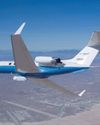
Eye in the Sky
An interview with Joe Piotrowski
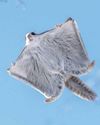
Airborne Animals
Humans have taken to the skies in balloons, gliders, and airplanes-but we're not alone among the clouds. Animals of all sorts have evolved to harness wind power.
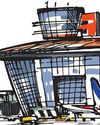
TAKING OFF
The Wright brothers expected airplanes to “take off,” but even they might be amazed at the way the airline industry has become big business. In the past, it was expensive to send something by plane.

GROWTH OF AN INDUSTRY
After their historic flight at Kitty Hawk in 1903, Wilbur and Orville Wright returned to Dayton, Ohio. They spent the next few years making adjustments and building additional versions of their powered aircraft in their bicycle shop.
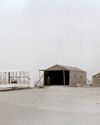
WHY KITTY HAWK?
The Wright brothers searched carefully for the best place to test their gliders and flying machines. Their main concern was for good, steady winds. But they also hoped to find a remote location to allow them to perform tests away from the public eye.
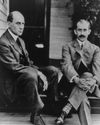
Two Brothers From Ohio
Most people do not realize that the Wright brothers—Wilbur, born in 1867, and Orville, born in 1871—performed various scientific experiments before inventing their aircraft. For as long as anyone in their hometown of Dayton, Ohio, could remember, the Wright boys had worked on mechanical projects.
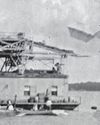
A Helping Hand
May 6, 1896. A group of people who had gathered beside the Potomac River, just south of the U.S. capital, grew quiet. Then, it erupted in cheers as a small, unmanned aircraft took to the skies and flew for more than half a mile. The flight came seven years before the Wright brothers’ first manned, powered flight. The inventor of the aircraft was Dr. Samuel Pierpont Langley.

THE IDEA MEN
People dreamed of flying thousands of years before the Wright brothers found success near Kitty Hawk, North Carolina. These dreamers, such as Leonardo da Vinci, studied birds flying and imagined how humans might do the same—if only they had wings. Other men developed a more hands-on approach to the topic. Early inventors made wings of cloth, glue, and feathers and tied these creations to their arms in an attempt to imitate nature.

Da Vinci's 4 Designs
Have you ever wondered how a bird flies? Leonardo da Vinci (1452–1519) did. He thought that understanding how a bird flies would provide the key to human flight. So, what did da Vinci learn from birds?

Silken Wings
Seven hundred years before the Wright brothers began experimenting with human flight, the Chinese had already mastered its secrets—with kites.